If you’ve ever considered walking as merely a way to get from point A to point B, you’re overlooking one of the most powerful and accessible tools for getting in shape. Walking is often called the unsung hero of the workout world. It doesn’t require a costly gym membership, stylish clothes, or a high-end fitness tracker. All it asks for is this: take one step… and then another… and keep going.
The real value of walking isn’t in obsessing over step counts or calories burned. Instead, it lies in gradually weaving movement into your daily lifestyle — in a way that feels enjoyable, sustainable, and empowering. Whether you’re just beginning your fitness journey or coming back after a break, walking meets you where you are and takes you forward — one step at a time.
Why Walking Is a Powerful Weight Loss Tool
There’s a reason why doctors, wellness coaches, and therapists recommend walking: it works on multiple levels — physical, mental, and emotional.
- Physically, walking is a moderate-intensity cardiovascular activity. It burns calories, improves cardiovascular health, and tones your legs, core, and even arms if you move them intentionally.
- Mentally, walking is a time to breathe, reflect, and relieve stress.
- Metabolically, it improves insulin sensitivity, boosts your metabolism, and lowers chronic inflammation — a hidden culprit in stubborn fat retention.
Unlike high-impact workouts, walking is gentle on your joints and doesn’t leave you feeling exhausted. There’s no steep learning curve. You already know how to do it. You don’t need a trainer, equipment, or a lot of space. Walk indoors or outdoors, alone or with a friend, in silence or with your favorite playlist — it’s flexible and inviting.
That’s why walking is such an ideal weight-loss companion.
Starting With Realistic Goals
Before you lace up your shoes, check in with your mindset. It’s tempting to go “all in,” especially when driven by a recent weight gain or new motivation. But real, lasting success comes from realistic and sustainable goals.
Walking for weight loss is a marathon, not a sprint.
Begin with a goal that is attainable but slightly challenging. For example, aim for 20 minutes of walking, five times a week. If you’re already active, you might start with 30 minutes. Choose a schedule that blends with your life, not one that disrupts it.
Even small increases in your daily steps can lead to big changes over time.
How Much Should You Walk to Lose Weight?
According to the CDC, adults should aim for 150 minutes of moderate-intensity aerobic activity each week — that’s about 30 minutes a day, five days a week.
For those looking to lose weight more aggressively or maintain a recent weight loss, that number rises to 300 minutes per week, or roughly 45 minutes a day.
But here’s the key:
It’s not just about the time — it’s also about the intensity.
Speed Matters: Not a Stroll, Not a Sprint
A slow stroll is pleasant, but it won’t torch many calories. To achieve weight loss results, you should walk at a brisk pace — one where you can hold a conversation, but not sing a song.
You’ll know you’re doing it right when:
- Your heart rate is elevated
- Your breathing becomes deeper
- You feel gentle heat and effort in your legs and arms
💡 Pro Tip:
Aim to walk at a pace of about 100 steps per minute — that’s the sweet spot for maintaining a moderate intensity, ideal for fat burning.
Calories Burned: The Inside Scoop
The number of calories burned while walking depends on factors like:
- Your weight
- Your walking speed
- Your walking route (flat vs. hilly)
- Your posture and movement (arm swing, stride, etc.)
For example:
A 150-pound person walking briskly for 30 minutes can burn approximately 130–150 calories.
The heavier you are, the more calories you’ll burn.
Add hills, a faster pace, or hand weights, and you’ll burn even more.
| Pace (mph) | Calories Burned in 30 mins (150 lbs) | Calories Burned in 30 mins (180 lbs) |
|---|---|---|
| 2.0 (leisurely) | 100 | 120 |
| 3.0 (moderate) | 130 | 156 |
| 4.0 (brisk) | 180 | 216 |
| 4.5+ (fast) | 210+ | 250+ |
Although the figures may not be considered to be dramatic, the true spells are in purchasing consistency. It adds up physically and seasonally, day in and day out, as one strolls.
Get Ready Before You Step Out
Most people do not realize the importance of preparation. The best investment you can ever do is to buy good walking shoes. Not expensive ones, but with strong support of arches, memory cushioning, and firm fit. The presence of shin splints, plantar fasciitis, or even knee pain is possible when wearing poor footwear, and this should be avoided at all costs because it may ruin your game even before it actually gets off the ground.
When walking, wear layered clothes, particularly in times of changes. Pick up breathable materials and do not forget about your water bottle. Drinking plenty of water, both before and after going out on that walk, is also very important—even when you are not sweating so much.
That is also good to stretch 3–5 minutes before you walk. No complexities, nothing more than some simple leg swinging, shoulder rotating, or ankle rotating to get the blood moving and the joints lubed up. Warm-up will help decrease chances of injuries and also make your walks more comfortable.
Your First Week: What It Should Look Like
Consider the first week as the orientation rather than a test. You do not aim to get a personal best but design the new habit. The idea is to become active in some routinely scheduled way, even with short and sluggish walks.
Begin with a strategy that is encouraging, as opposed to a threatening one. Perhaps 15 minutes a day one. In case that is not a challenge, increase by five minutes the next day. Be attentive to what your body is saying to you, in the sense of both physically and emotionally. Do you feel good at the new air? Do you sleep better? Does your head feel clearer?
All these positive sides may be noticeable earlier than the loss of weight, however, they are not less important. These are indicators that your body and brain are in line with this new practice.
Walking the Right Way: Posture and Form
It may not sound too important to discuss the art of walking, however, there is some art to walking. When sitting at a desk all day, most of the people have formed a postural habit that is either inefficient or straining.
Good posture when walking begins with the head. Don’t keep it downward facing your phone. The shoulders must not be hunched. Arms should hang loosely down your sides; not straight, and not flailing forth. The core should be lightly activated to ensure that your back is also guarded, and the steps are to pass smoothly and steadily heel to toe.
By walking mindfully, you burn up more energy—not only than before—but you also eliminate the chances of pain and enhance coordination in general. Imagine that you have to walk as a graceful exercise, not a monotonous one.
Adding Intensity Gradually
After getting accustomed to daily walking, you may want to take a step further. Mind you do not rush. Bring intensity in moderation. Among the simplest is to speed up a little after every several days or once in a week. The other one is by walking uphill or using an inclined treadmill.
Alternatively, you should give interval walking a try: walk vigorously during 1–2 minutes, then walk slowly during 1 minute and so on. This increases the heart rate without a hard core jog.
All these little adjustments prepare your body to be more efficient and make you last longer, and—most importantly—to make sure the process remains interesting.
A Beginner-Friendly 7-Day Walking Plan
Fat burning walking need not be like military training. The first building block of a smart plan is easy as pie and it builds confidence. It is not about giving your all and crashing really hard, but about forming tiny daily practices that will train your body and mind.
This is an example of a weekly routine that you can start with. It has days when one rests and those that are light in activity in order to make them sustainable.
| Day | Activity | Duration | Goal/Tip |
|---|---|---|---|
| Day 1 (Mon) | Brisk Walk | 20 mins | Keep a steady pace; aim for slight breathlessness |
| Day 2 (Tue) | Slow Walk + Stretching | 15 mins | Focus on relaxing and warming your body |
| Day 3 (Wed) | Brisk Walk + 2 Min Power Bursts (x2) | 25 mins | Add 2 short speed bursts to elevate heart rate |
| Day 4 (Thu) | Rest or Light Walk | 10 mins | Walk mindfully, no rush |
| Day 5 (Fri) | Incline Walk (slopes or stairs) | 30 mins | Hills boost fat burning |
| Day 6 (Sat) | Brisk Walk + Music/Podcast | 30 mins | Enjoyment keeps you consistent |
| Day 7 (Sun) | Long Leisure Walk | 45 mins | Relax, reflect, let it be your active reset |
You can adjust this according to your fitness, time that you have, and comfort. We are not supposed to do it faultlessly, but just apply it as a handy guide. In case you fail to go one day, do not go back to day one. Always keep on walking.
Nourishing Your Way with the Right Nutrition
You may spend hours walking, yet, unless your eating habits are correct, you can feel it taking painfully long to lose weight, or not at all. This does not imply that you have to adopt stringent diets. It is better to think about food as diet and energy.
Stick to a light yet energizing meal before your walk, particularly in the event that it is a couple of hours since your last food. Banana, piece of toast and almond butter or few berries with Greek yogurt is all good. After walking your body becomes more insulin-sensitive and that is why it is time to provide it with protein and fiber. Consider whole-grain bread and eggs, grilled veggies and chicken, or a smoothie using oats, chia seeds and a sprinkling of fruit.
Avoid reward-eating. A person would think, as I have walked, I shall have pizza or a sugary drink. However, such an attitude can nullify the shortage of calories. Rather, reward your walk through self-care stretching, a lowering of temperature, or note your progress in a journal. That will be what your body really wants.
Monitoring Without Caring About the Scale

Losing weight is misleading. There are days when you may not lose weight even though you are doing everything by the book. Numbers should not be the only motivation. The benefits of walking are far beyond pounds.
Write a walking journal or a free step tracker app of your daily walks, steps, energy, and mood. With time patterns will appear. You will find yourself getting a better sleep, feeling more energy in the morning and dealing better with your stress.
Watch your clothes fit. The measurement of the waist should also be taken after every few weeks. When did you last find it so easy to climb the stairs or walk so far that you did not have to rest? All these are good indicators that you are going in the right direction.
Note that losing weight is not linear. Your daily weight can be changed by hormones, hydration, and even sleep. The only thing that matters is, that you are moving because you are showing up and you are not giving up.
Mental Health and Mood: The Superpower of Walking
It is not just that walking cuts down your waist, it clears the mind as well. The monotony of the rhythm of your steps, fresh air and the effect of natural lighting stimulates endorphins, that feel-good hormone. It does not require you to walk long distances. Just a few minutes a day (10–15) may reduce symptoms of anxiety, relieve depression and increase the capacity of attention.
Have you ever felt that your thoughts are less knotted when you are walking? This is because when you walk both hemispheres of your brain are stimulated. Even some therapists employ the so-called walking sessions as the means of encouraging the client to speak better. It is mobile meditation.
When going to the same direction every day, change. New environments provide your senses with experiences and renew your minds. Put music or audiobooks or mindfulness reminders, like (Notice five things you see…) to keep you in the moment and make the walk more rewarding.
Remaining Consistent When Life Is Away
When life is dull it is not easy to be faithful to a plan. But what happens when it rains, you have a broken-down day at work or your children are sick?
It is here that the change of mindset counts. It is not an all or nothing task to walk. Your plan may have been 30 and all you got was 10 but that is a win. There is nothing worse than nothing at all.
The secret? Establish an alarm detector. Install a loop that you can repeat five minutes in your home. Avoid sitting and watch TV in one place. Make walking conversations on the phone. Parking a car as far as possible without it being too far to the entrance. Incorporate stack walking into your daily routine so you do not think of it as an added work but as an ordinary daily activity.
Just a missed day is not a failure. It does nothing but prove you are a human. The point is to restart without any shame. Walking is not prejudiced. It simply greets you back.
Stepping Clear of the Typical Walking Errors
Even a simple act, like walking, can be slowed down or even make you feel bad by a couple of prevailing habits. One of them is by wearing some bad shoes which may result in shin injury or blisters. The less obvious, another one, is not listening to your body even when you feel sore after running or running out of energy to propel you forward. When certain things are painful every day, then call in sick, or consult a physiotherapist.
It is another pitfall when you compare your pace or your progress to other people. Each person has a different path. The fact that other people may be losing weight more intently does not mean you are doing something wrong. Losing weight is a thing of several dozen individual factors, such as age, hormones, stress, and sleep.
And finally, perfectionism should never put a halt on your cue. When you miss a walk or eat too much, or get stuck, push forward. Perfection is not what counts to get your goal. All that you need to do is show up.
How Long Until I Notice Weight Loss Results?
It is most likely the question asked the most often—and the most complicated. When you are taking regular steps (150–300 minutes a week at least) and keeping moderate calorie consumption, you might be able to note the visible outcomes in 4–6 weeks. Others probably see things change a bit later than others.
The early symptoms are usually not on the scale. They manifest themselves in the form of increased stamina, improved digestion, lighter mood and more relaxed sleep. Then gradually the inches and pounds take their turn.
Within three months, majority of the individuals observe a change in manner in which the clothes fit, especially the midsection. After six months, walking has the potential to change your body composition more so when you supplement it by doing basic strength exercises two or three times a week.
The trick is really the changes in your lifestyle. Breaking will be something that you will ache to do. You will be able to manage your health more. At first you will be walking not because you need to lose weight but because you want to feel alive.
Summary | Keep Moving, Keep Believing
Walking can sound too easy to do so much good, however, it is simplicity that is all its superpower. It does not beat you up. It does not require perfection. And due to that, it does work! Your silent steps create a louder sound than all the crash diets ever have made: consistency, confidence, and control over the body.
So no matter how far or not so far along your way you are, whether you are just about stepping out the door or are already a couple of weeks into it: remember this—every walk counts. Time is money. Each decision creates a momentum.
There is no need to run a marathon or to starve. All you need do is to walk. Day by day, week by week, month by month until the practice is your second nature and the outcomes channel into what you are turning out to be.
Store your shoes in a place that is visible. Make note of your progress in which you can sense it. And every step will remind you that movement is not a punishment—it is the road to evolution to achieve your best version.





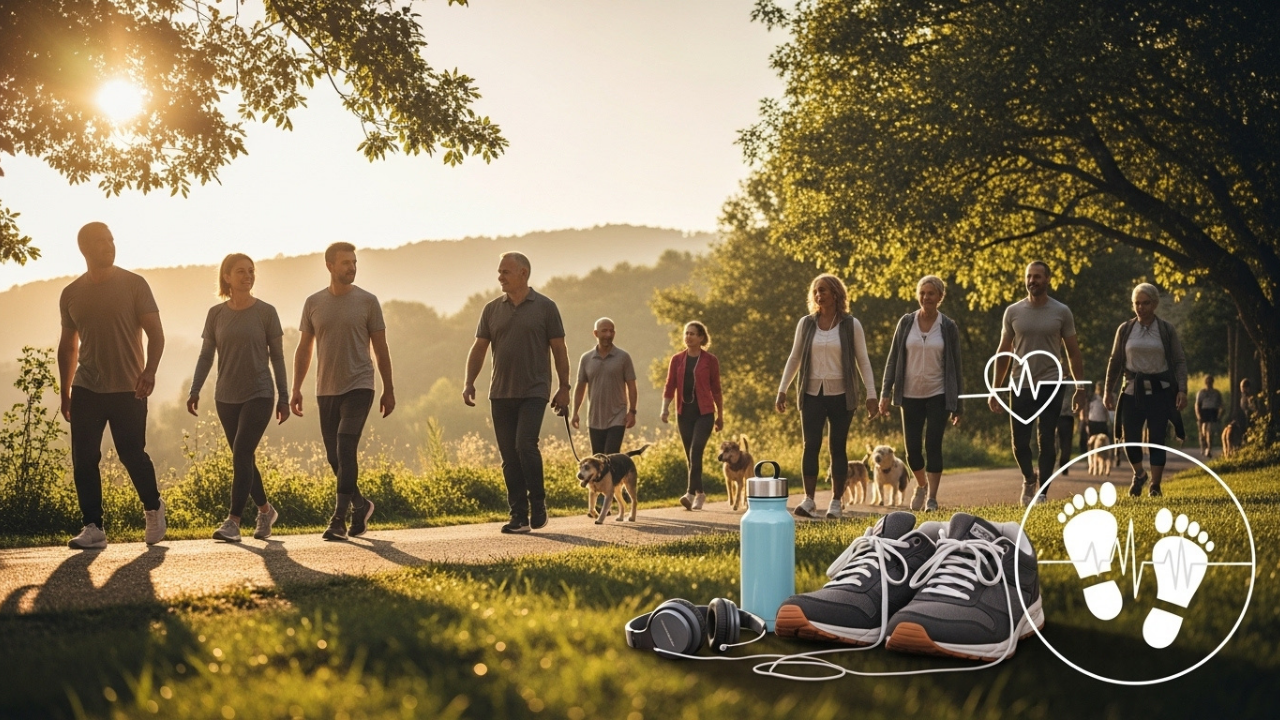

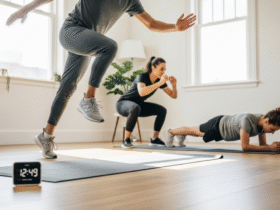


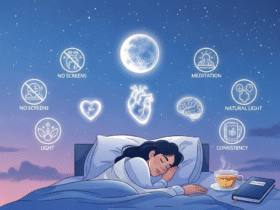
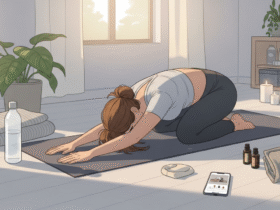

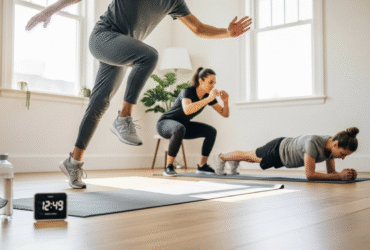
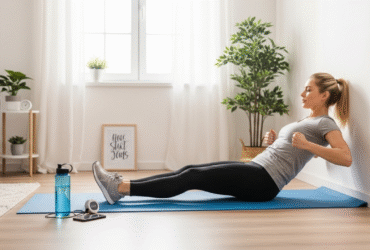
Leave a Reply